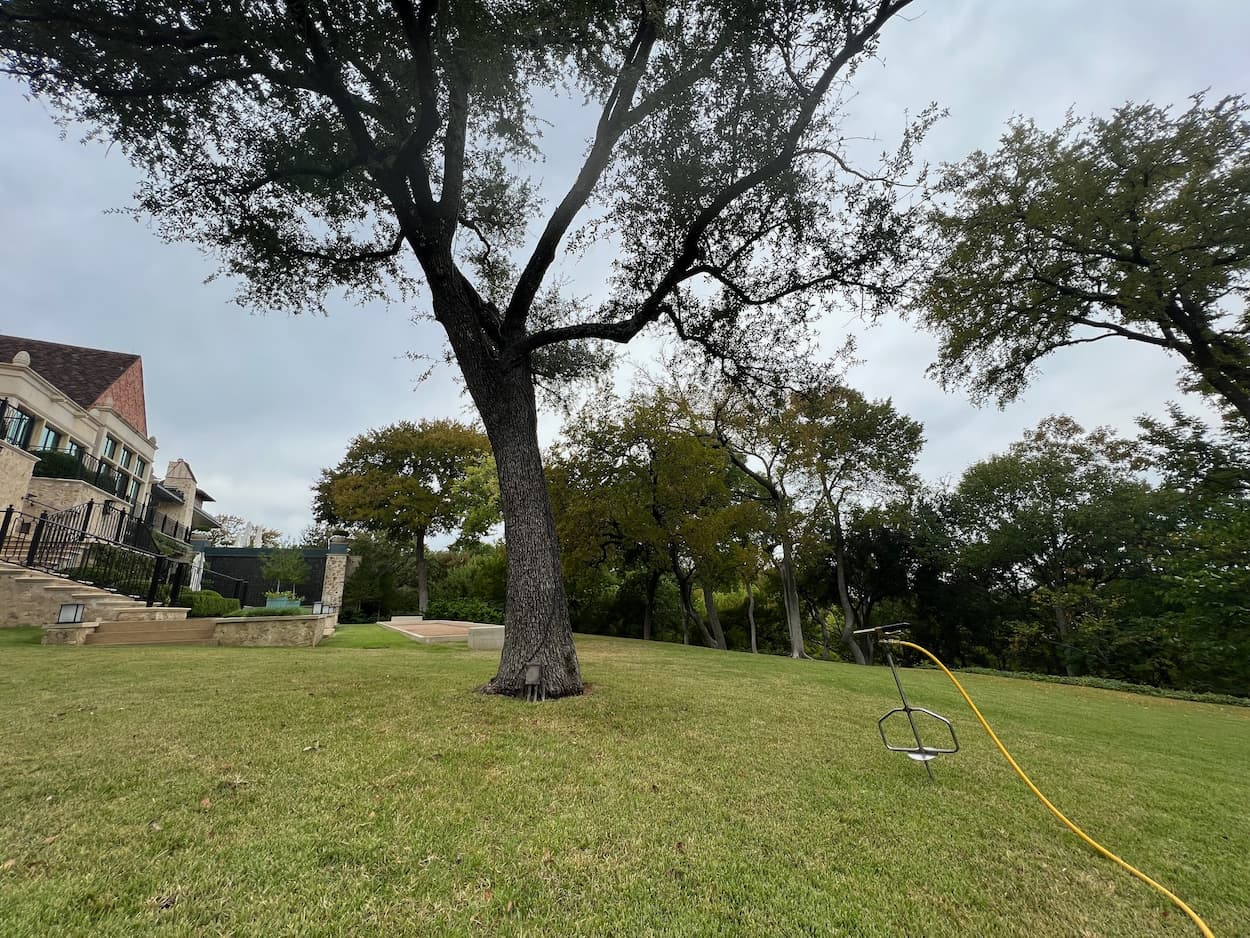
Tree Shrub Pest Treatment Services in Texas

Tree Shrub Pest Treatment Services Texas
Arborist USA provides Tree & Shrub Pest Treatment Services in Garland, Texas, and the surrounding areas.
Garland, located in the northeastern part of Dallas County, Texas, is blessed with a diverse array of beautiful trees and shrubs that contribute significantly to the city’s allure. However, these natural gems are continually under threat from damaging pests such as beetles, aphids, scale insects, and borers. In response, Garland has developed a robust and comprehensive tree and shrub pest treatment program.
In conclusion, Garland’s strategy employs constant vigilance, swift action utilizing eco-friendly treatments, biological control through natural predators, preventative measures, rotating treatment strategies, and expert intervention. This comprehensive approach ensures the city preserves not only the beauty of its trees and shrubs but also fortifies its commitment to environmental sustainability and community involvement in environmental stewardship.
If you are in need of Tree & Shrub Pest Treatment Services in Garland, TX, please get in touch with Arborist USA today by calling us at (817) 880-6130, your Tree & Shrub Disease Specialist.
A Sick Shrub Showing Signs of Pest Infestation in Texas. Tree & Shrub Pest Treatment North Texas.
A Sick Tree Showing Signs of Insect Damage in Texas. Tree & Shrub Pest Treatment Services Texas.
Leaves Turning Yellow On A Tree in Texas
Insect Root Damage On A Tree in Texas. Tree & Shrub Pest Treatment Texas.
Severe Insect Damage Showing On Tree in Texas. Treatment Needed for Tree & Shrubs Pest in Texas.
1. Common Pests: Trees and shrubs in Garland frequently fall victim to pests such as beetles, aphids, scale insects, borers, and caterpillars. Initiating effective treatments as soon as these pests are identified can help mitigate the risk of spread and irreversible damage.
2. Early Identification:The city recognizes the immense importance of regular monitoring and early detection in combating these pests. Regular checks allow for early identification of infestations, enabling swift and effective action and minimizing the potential damage.
3. Natural Pesticides:When pests are observed, Garland quickly mobilizes its treatment efforts, with a strong emphasis on environmentally friendly practices. This includes the use of botanical oils and insecticidal soaps, which not only effectively deter pests but also limit harm to the broader ecosystem.
4. Systemic Insecticides:In the face of pests that burrow deep within the trunks or below the bark of trees, Garland deploys systemic insecticides. These powerful compounds circulate through the woody tissues of the plants, eradicating the pests while minimizing impacts on the surrounding environment.
5. Organic Pest Control:Garland also recognizes the power of nature’s own pest control system and integrates biological control measures into its strategy. Encouraging the proliferation of natural predators such as ladybugs and lacewings offers an environmentally friendly method to curb the increasing pest population.
6. Preventative Measures:A strong emphasis is placed upon preventative measures. Garland encourages residents to regularly prune their trees, maintain cleanliness in the environments surrounding trees and shrubs, and interrupt pest breeding cycles. These positive habits go a long way towards preventing future infestations and maintaining a healthy ecosystem.
7. Treatment Resistance:To counter the chance of pest resistance and ensure continuing efficacy of treatments, Garland has adopted a rotational treatment strategy. By varying the methods of control, pests are less likely to develop immunity to specific treatments, further bolstering the city’s pest control measures.
8. Expert Advice:Garland also realizes the value of professional expertise in dealing with such pests. Engaging professional arborists and pest control services supplies insights into the local pest and plant species, enhancing the combat strategy and helping maintain the city’s lush green foliage.
If you’re concerned or have any further questions about our Tree & Shrub Pest Treatment Services in Garland, TX, or surrounding areas in North Texas, please call us at (817) 880-6130.
Listed below are common Tree & Shrub Pests found in Texas.
Aphids
A white soft body insect that creates a sticky “honey dew” structure on limbs or leaves, blocking nutrients.
Bagworms
Bagworms lay eggs that create small cone-shaped structures less than three inches in length.
Beetles
An invasive wood borer that is subject in all wood tissue that causes severe decline in trees health.
Gypsy Moth
A larva that boars into leaf structure that cause lesser of a foliation and decline in overall leaf structure.
Oak Gall
A growth deformity known as a “gall” commonly occur on oak trees subject to branches and other structures.
Termites
Termites, wood-destroying insect, eats away at all wood tissue, damaging the structures of the trees.
Twig Girdlers
Being a member of the long-horned beetle family, these girdlers are known to eat leaf and other tree areas.
Webworms
These caterpillars spin white webbing bag nests in tree branches and eat your tree foliage (leaves).
This website uses cookies.